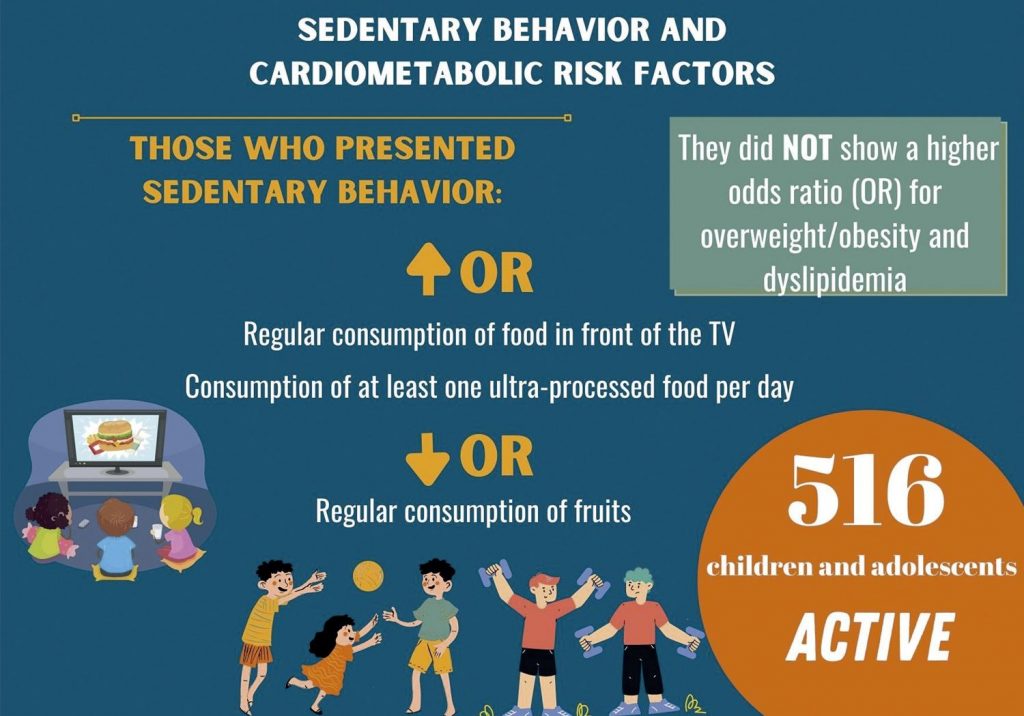Arq. Bras. Cardiol. 2023; 120(2): e20220357
Sedentary Behavior, Dietary Habits, and Cardiometabolic Risk in Physically Active Children and Adolescents
This Original Article is referred by the Short Editorial "Sit Less, Move More, and Feel Good, Folks!: Sedentary Behavior May Stake Cardiometabolic Health Through Mental Health Problems Across the Lifespan".
Abstract
Background
Sedentary behavior has been associated with several cardiometabolic risk factors during childhood. However, little is known about the impact of sedentary behavior on the health and eating habits of physically active children and adolescents.
Objective
To evaluate the association between sedentary behavior and cardiometabolic risk factors and eating habits in physically active children and adolescents.
Methods
This cross-sectional study was conducted, including 516 physically active children and adolescents (10 to 18 years old; both sexes) enrolled in the social project “Estação Conhecimento-Vale” were evaluated. Biochemical and lifestyle variables (questionnaire) were collected. Sedentary behavior was determined indirectly (questionnaire), by using sitting time ≥ 3 hours per day as a cutoff point. A p-value < 0.05 was considered statistically significant for all tests.
Results
Sedentary behavior was not associated with overweight/obesity (odds ratio = 0.72 [95% confidence interval (CI): 0.325-1.389]), hypertriglyceridemia (odds ratio = 0.63 [95% CI: 0.306-1.297]), low HDL cholesterol (odds ratio = 0.57 [95% CI: 0.323-1.019]), or high non-HDL cholesterol (odds ratio = 0.63 [95% CI: 0.283-1.389]). However, children and adolescents with sedentary behavior were more likely to regularly consume food in front of the television (odds ratio = 1.96 [95% CI: 1.114-3.456]) and to consume at least one ultra-processed food per day (odds ratio = 2.42 [95% CI: 1.381-4.241]). In addition, they were less likely to consume fruit regularly (odds ratio = 0.52 [95% CI: 0.278-0.967]).
Conclusion
There was no association between sedentary behavior and cardiometabolic risk factors in physically active children and adolescents. However, sedentary behavior was associated with inadequate eating habits. Thus, we may suggest that the regular engagement in physical activity may attenuate the deleterious effects of sedentary behavior on the cardiometabolic parameters of children and adolescents.
2,315

